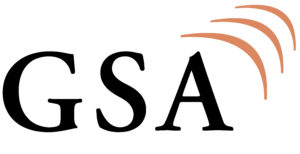Gigabit LTE – Member Report – January 2021
About this report
Although the eyes of the press have been firmly fixed on 5G developments, operators have been continuing to invest in their LTE networks. They have been deploying technologies designed to improve the capabilities of their LTE networks and, in particular, to improve peak downlink (DL) throughput speeds. Operators have been focusing mainly on three technologies from the LTE-Advanced tool-kit – carrier aggregation, 4×4 MIMO and 256QAM modulation in the downlink – that if used together and with sufficient aggregated bandwidth, can deliver maximum peak downlink speeds approaching, and even exceeding, 1 Gbps. Such networks are often described as ‘Gigabit LTE networks’ mirroring a term that is also used in the fixed broadband industry.
Drawing on information collected by GSA about operator deployments of LTE-Advanced features for its comprehensive database on operator networks, technologies and spectrum (NTS), this report identifies operators investing at a technology level in Gigabit LTE (defined as carrier aggregation plus 4×4 MIMO [or above] plus 256QAM DL). Note that ‘4×4 MIMO or above’ includes 4×4 MIMO and all higher-order MIMO technologies such as 8T8R MIMO and Massive MIMO.
327 operators have deployed/launched LTE-Advanced networks in 147 countries/territories.
329 operators in 139 countries/territories are investing in at least one of the three key Gigabit LTE component technologies.
115 operators in 68 countries/territories are identified as investing in all three key Gigabit LTE component technologies.
Of those, 72 operators in 48 countries/territories have deployed all three technologies.
Forty-two operators (representing nearly 13% of all the deployed/launched LTE-Advanced networks) can support UE Cat-16 peak theoretical DL speeds (>750 Mbps) or above.
Thirty-two of those have announced Gigabit (or very near at 979 Mbps) peak theoretical throughput, or better, in the downlink in their deployed/commercial networks.
Twelve of them have pockets of LTE network capable of delivering the maximum DL speeds supported by Cat-18 devices, i.e. peak theoretical throughput of up to 1.2 Gbps. Six of those have announced parts of their network can deliver a maximum rate in its commercial LTE network of between 1.2 Gbps and 1.6 Gbps (Cat-19).
We expect many other networks to achieve Gigabit speeds on their LTE networks very soon, as they refarm or acquire new spectrum resources, invest in higher orders of MIMO technology and implement new carrier aggregation combinations. Operators are still investing in improving their LTE networks, even as they deploy 5G technologies.
Technology context
While there are many features in the LTE-Advanced tool-kit, the three of interest in this report are:
Carrier aggregation (CA) – the process of aggregating the bandwidths of multiple component carriers to increase bit-rate. Carriers may be in licensed or unlicensed spectrum and may be of varying bandwidths. Varying numbers of carriers may be aggregated. Currently, commercial networks typically aggregate two, three or four carriers.
4×4 MIMO – the use of multiple antennas creating four transmit and four receive radio paths (4T4R) to increase the capacity of a link. Higher-order MIMO (with greater numbers of transmit and receive radio paths) is also being used in trials and live networks, including 8T8R and Massive MIMO. In this report, we count all networks using 4×4 MIMO or higher-order versions of MIMO.
256QAM in the downlink – a modulation scheme specified in 3GPP Release 12 and increasingly used in commercial networks. It enables higher data rates by increasing the number of bits of information that can be carried per symbol (though it is more susceptible to noise and interference than lower orders of QAM).
Gigabit LTE – Member Report – January 2021

